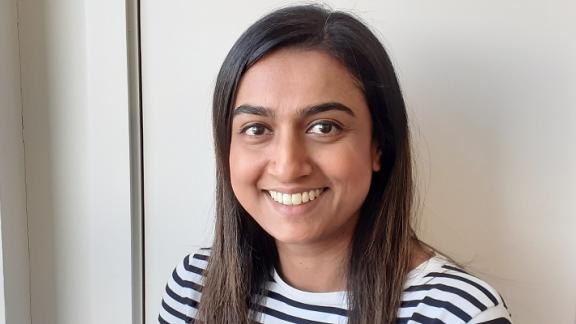The PHM vaccination drive that’s ‘turning heads’ in Norfolk
Adopting a PHM approach to the pandemic response in Norfolk and Waveney has led to reductions in hospital admissions, COVID-19 infections and mortality, as well as relieving system pressures, particularly for primary care.
Population health management (PHM) was said to be ‘in vogue’ by a GP writing for the NHS Confederation recently.
It certainly feels pretty momentous for us in Norfolk and Waveney right now.
We kicked off our first large-scale PHM initiative when coronavirus hit in early 2020.
The pandemic – and the urgent response it required - gave us the impetus to galvanise and roll out our COVID-19 Protect project. This was to be a PHM baptism of fire.
Identifying those most in need
Emergency COPI (control of patient information) regulations facilitated access to pseudonymised patient information at a local level.
Running primary, secondary, ambulance and social care data through an online risk stratification tool allowed us to identify those most susceptible to serious COVID-19-related illness and hospitalisation and target them with personalised support.
In addition to the 28,000 patients on the national shielding list, we identified and proactively reached out to an additional 12,000 vulnerable people at a time when the regular services they relied on suddenly closed or diverted to voicemail.
Our virtual support team made regular contact with this cohort and escalated individual patients for a one-stop-shop review by clinical and non-clinical support teams.
They triaged shielding patients daily, connecting them to a safety net of health and social care resources.
As the project progressed, we linked our datasets to the national index of multiple deprivation to find those at high risk also living in the areas of greatest deprivation.
Tailoring support
We knew these groups were less likely to be digitally enabled or might face challenges accessing services, and so we used letters, questionnaires and telephone support. With access to new information, decision-makers could:
- understand how the virus was spreading and identify risk in particularly vulnerable populations
- proactively increase resources in emerging hot spots
- ensure critical equipment was supplied to sites with greatest need
- divert patients and service users to the services that were best able to care for them based on demand, resources, and staffing capacity.
Data shows that Covid Protect intervention and support reduced hospital admissions, COVID-19 infections and mortality as well as relieving system pressures, particularly for primary care.
National recognition
The project was the subject of a Yale University ‘roadmap for adoption’ which now forms part of the teaching within their School of Public Health. Covid Protect also went on to win two national awards last year having been a finalist in six.
Data insight has also been fundamental to the success of our vaccination programme. Norfolk and Waveney spent the last year bouncing around the top ten performing health and care systems for vaccine uptake, despite its rurality and geographic spread.
Our risk stratification tool is continuously updated with machine learning and facilitates a targeted approach at speed. Previously we would only have known how many people were unvaccinated, but now we also know who and where they are.
In an eligible cohort of 50,000 we can quickly find the 1,000 at highest risk and the 1,000 most deprived. And with public health heat maps we can decide where to take our vaccination bus at the weekend and almost immediately text those living closest with the details.
We are carefully matching demand and need to available resources, delivering not only quantity but quality in reaching the communities that are most hesitant or impacted by inequality.
For example, we’ve identified and proactively contacted hundreds of patients with a serious mental health diagnosis and supported them to get their COVID-19 and flu vaccines at a bespoke clinic.
We are driving down health inequalities, the cost of care and demand on the system, but the most exciting thing is that the possibilities are pretty much endless
Data has also identified where we need to provide interpreters or find volunteers who speak a specific language to engage with communities and combat misinformation and hesitancy.
We have run midnight vaccination clinics in mosques during Ramadan, opened pop-up clinics in universities and colleges and commissioned a ‘worry bus’ to support people with needle anxiety, mental health issues, autism and learning disability.
We are driving down health inequalities, the cost of care and demand on the system, but the most exciting thing is that the possibilities are pretty much endless.
We have a raft of ongoing PHM projects now under the banner of Protect Now, including:
- increasing access to psychological therapies - identifying those with a recent diagnosis of depression or anxiety and linking them to our wellbeing service
- increasing uptake of cervical screening - identifying those who have not attended screening in the last three to five years and supporting an appointment booking
- preventing and reversing diabetes - identifying those with abnormal glucose levels in recent blood tests and linking them to lifestyle and weight management services.
Our ambition is to bake PHM into commissioning at every level, so we can keep shifting service provision from being demand-led to being needs-based
We’ve proven the concept and made the case for wider implementation and PHM to be embedded in digital transformation programmes and ICS workstreams. Our ambition is to bake PHM into commissioning at every level, so we can keep shifting service provision from being demand-led to being needs-based.
Creating the data infrastructure and culture change required for transformation is never easy, but the pandemic response cemented our thinking and won hearts and minds.
PHM may be in vogue, but in Norfolk and Waveney we’re already walking the catwalk and turning heads.
Howard Martin is director for population health management and health inequalities, and CCG executive lead for the vaccination programme, at NHS Norfolk and Waveney.
You can follow NHS Norfolk and Waveney on Twitter @NHSNWCCG



